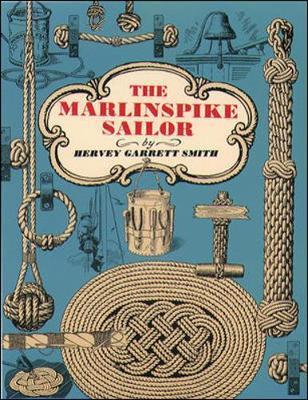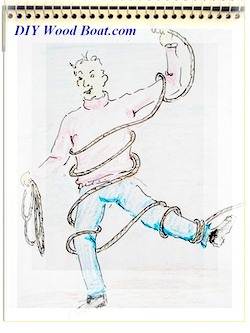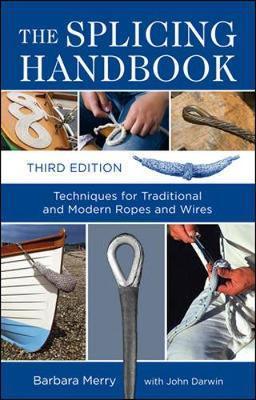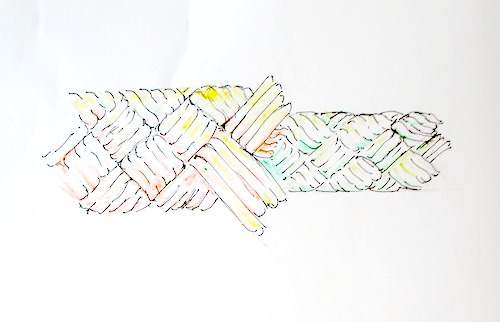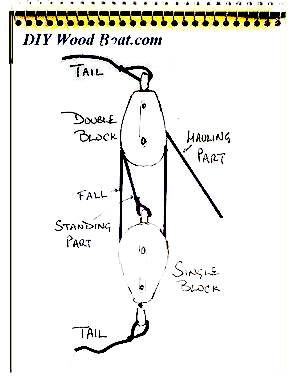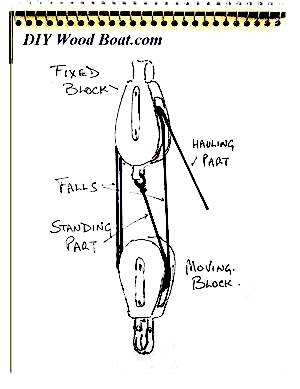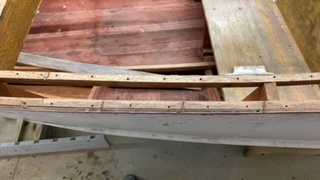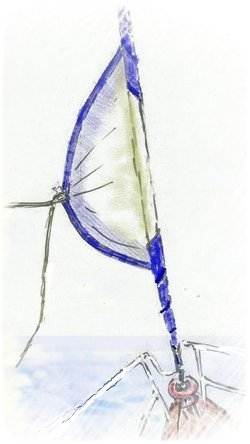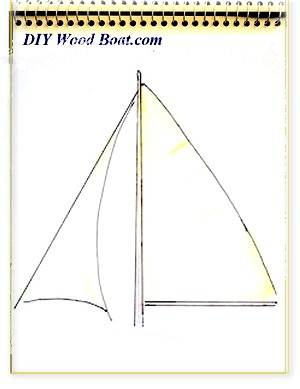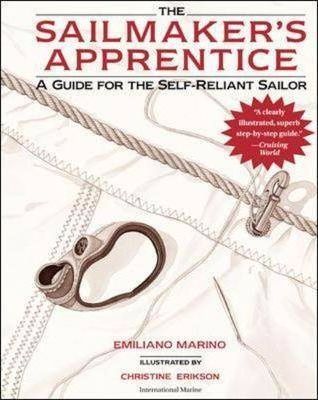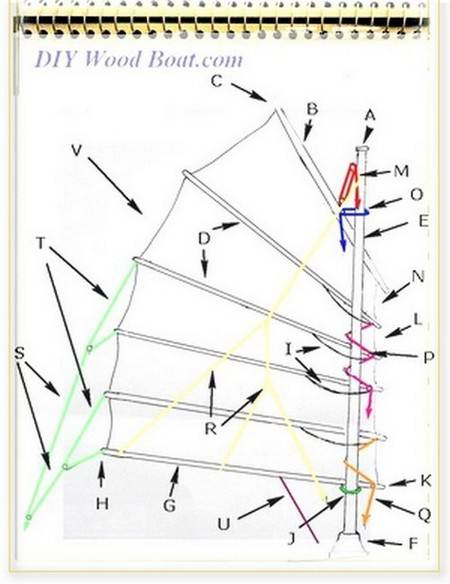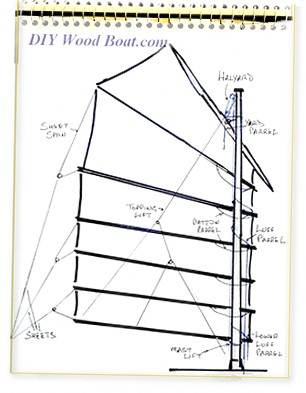- Home
- Ropes and Rigs
- Rope Types
- Whipping
Whipping Ropes and Lines.
There
are numerous whipping methods most use twine tightly wrapped many
times around the rope close to its end.
With many of the modern synthetic ropes you can simply melt together the ends to prevent them fraying.
The ends can also be taped, however tape can soon becomes ragged, breaks and then allows the rope to fray.
PVC
tape is fine just for wrapping around the rope to contain
the strands prior to cutting it.
However, a whipped-end is not only the best looking way to finish a rope end but if done properly it will outlast other methods.
A
common whip is fine in most cases but for lines which require a more
secure, longer lasting end the sailmaker’s whip is more robust.
Common Whipping
Of the several methods used for binding a line end, the easiest to do is the common whip.
This
doesn't require any tools and can be used with either three-strand or
braided line, but it does have the disadvantage that if handled often
it can become loose and slip off.
The video below will probably give you a better idea of the process.
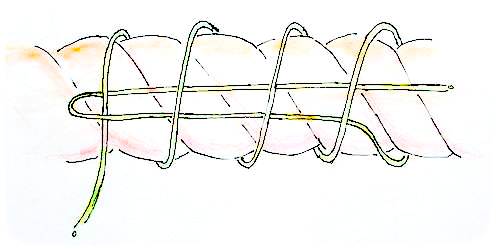
However, the basic steps are to start with a loop of the twine that is
at least twice as long as the diameter of the rope.
Lay the loop along the rope with the loop toward the bitter end of the rope and the short end extending down the length of rope (standing end).
Begin wrapping the twine around both the rope and the bight in the twine, starting from the base of the loop, leaving the end of the loop showing.
Pull each turn tight and snug as you go along.
Keep winding until close to the end of the loop.
Cut the twine with then slip the end through the loop.
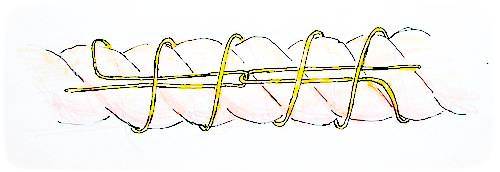
Now if you pull on the short end of the loop this should pull the cut
end of the twine through under the windings.
Finish off with a buried reef knot.
You
can finish with several reef knots or half hitches then pull these
through the rope or under the bindings with a needle so that they are
neatly buried.
Trim the line close to the whip and if using synthetic rope melt the end as well.
affiliate linksSailmaker's Whipping
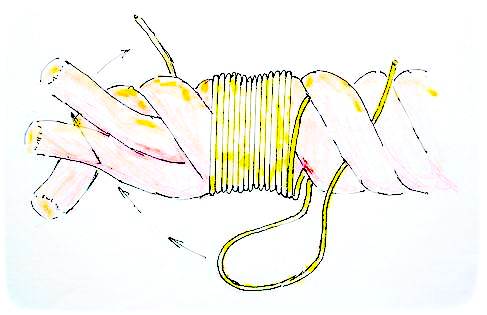
The Sailmaker's-Whip is more secure because it is ‘sewn’ into, rather
than just wound onto, the rope.
Again, there are many different variations on this basic theme.
Essentially, the binding turns are held in place by frapping turns which both grip the rope and prevent the whipping from unwinding.
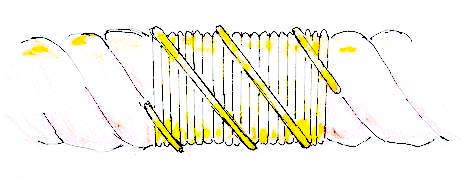
This
method can be used on
braided as well as three stranded rope.
It
is possible do a sailmaker's whipping on three stranded rope with out a
needle by opening the strands to pass the twine around them.
However, a large sailmaker’s needle will make the job easier.
I prefer to use my
‘Speedy Stitcher’, the large wooden handle makes
it so much easier to handle and apply leverage.
With three strand rope it is easy to decide where to lay the frapping
turns, along the groove between the rope strands.
Three frapping turns is also normal with braided rope just take care to place the frapping turns evenly around the binding.
On
smaller braided ropes just
two sets of frapping turns on opposite sides is quite acceptable.
With three strand rope begin by separating the strands of the rope for
approximately twice the rope diameter.
Form a loop in the whipcord then pass this over one of the rope strands.
The short end of the twine should then be wound inside the windings
along the groove between the rope strands.
When
you have sufficient windings use either a fid to lift the strand of the
rope or the ‘Speedy Stitcher’ to reeve the twine under the rope strand.
Pull the twine tight.
Lay
the twine over the original groove between strands, then pull the twine
between the ends of the rope strands so that the twine is around the
rope strand to the left of the original groove.
Pull the twine tight.
Use
the fid or ‘Speedy Stitcher’ to reeve the ends of the twine behind the
next strand to the left at the other end of the whipping.
Pull the twine tight.
When you have done all three strands bring the tail of the twine to the
end of the rope.
Finally tie a reef knot or two using the tail and working ends of the
twine.
Then knots are pulled through the rope to bury the ends.
Use
the same technique with braded line except that you won’t be able to
separate strands with a fid but will have to use a needle to ‘sew’ the
frapping turns.
With braded rope you won’t have the twist of the
strands as a guide so you will have to be careful to keep the frapping
turns equal.
Trim the strands of the rope close to the whipping.
It is still a good idea to melt the ends of synthetic rope as an
additional precaution.
The sailmaker’s-whip takes a little more time and practice to master,
however it is well worth the extra effort.
Not only is it more secure but it looks more ship shape.
West Country Whipping
This is not strictly speaking a whipping
but merely a series of
overhand knots finished off with a reef knot.
It
is not particularly secure but it is quick and easy to learn and will
hold until the end is properly finished off with a better method.
Start with a ‘constrictor knot’, then working away from the bitter end tie a series of overhand knots and finish with a reef knot or two, which can be pulled through the rope to bury it using a needle.
affiliate linksBack Splice
Splicing is a very ancient art, which done neatly creates a beautiful effect.
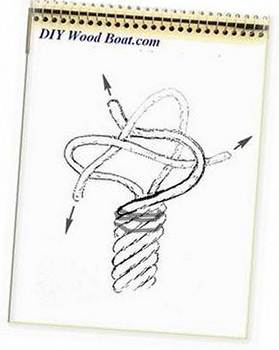
A
back
splice at the end of a three strand rope is very secure and
seamanlike.
One possible drawback is that a splice does increase the diameter of
the rope end, which will make it difficult to feed through blocks and
such like.
The
back splice is started by separating the strands and then
making a
‘crown’ to redirect the strands back towards the standing end.
The strands are then braided into the standing strands for at least
three complete ‘tucks’.
The back splice looks splendid on mooring lines but for other lines which may need to go through blocks a whipping is preferable.
NATIVE ASYNC
